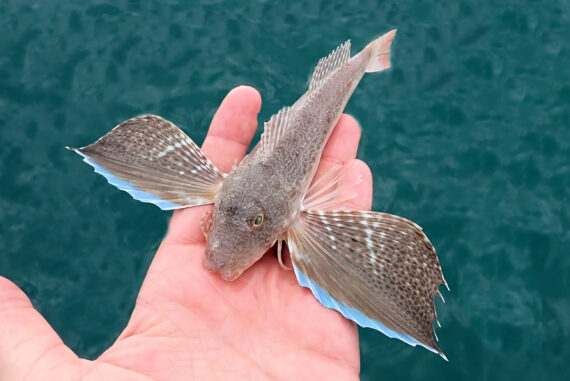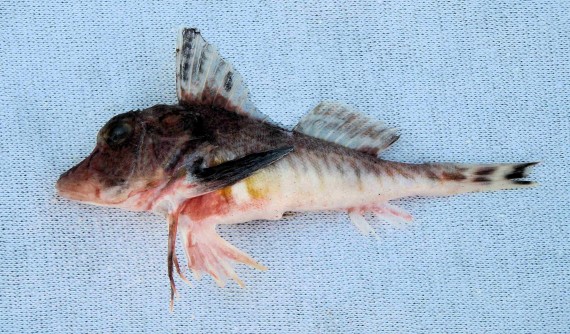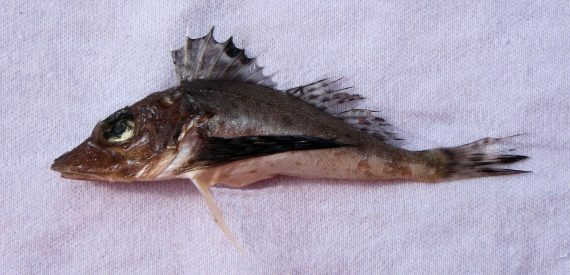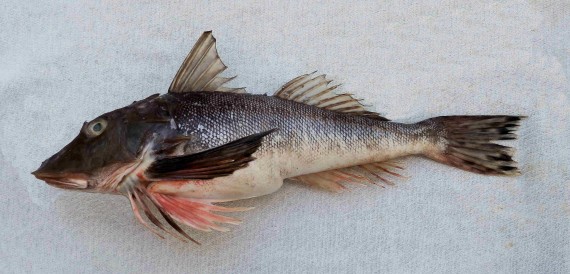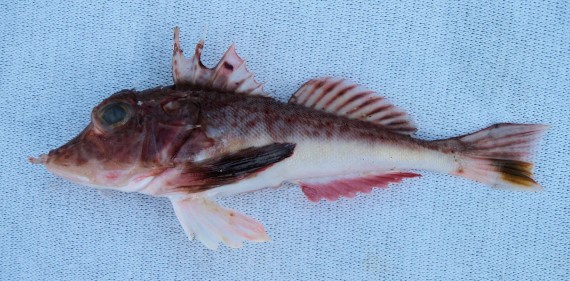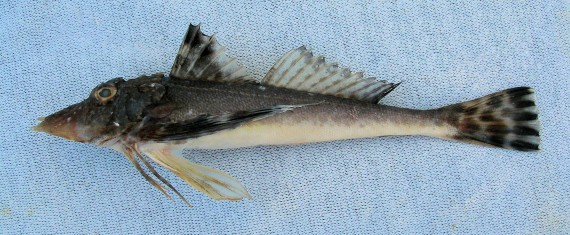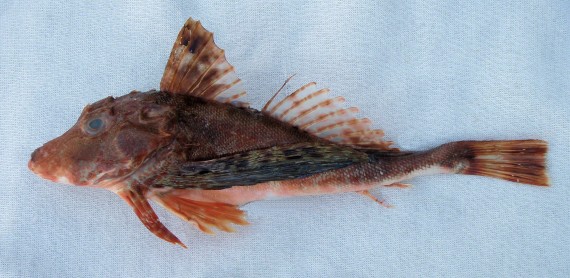Searobin Family – Triglidae
There are currently TEN members of the Searobin or Triglidae Family, three from the Atlantic Ocean and seven from the Pacific Ocean, presented in this website:
FROM THE ATLANTIC (3):
FROM THE PACIFIC (7):
The fish of the Searobin or Triglidae Family that has seventy-seven global members of which twenty species, twelve of which are found in the Atlantic and eight in the Pacific Ocean. They have been placed into two genera – members of the Bellator Genus have scaleless gill covers, 11 dorsal fin spines, and 11 dorsal rays; members of the Prionotus Genus have scaled gill covers, 10 dorsal spines, and 12 to 13 dorsal rays. They are found globally in all tropical and temperate seas. In Mexico’s fishing areas they are known as rubios and vacas.
The Searobins have moderately elongated bodies. They have large square bony heads that are covered with many ridges and spines. They lack barbells under their chin. Their mouth opens at the front or is slightly under the snout and has small needlelike teeth. They have 2 separated dorsal fins, the first with 9 to 11 spines and the second with 11 to 14 rays. Their pectoral fins vary in length but each species has three enlarged elongated free standing rays at the bottom of the fin that are detached from the main fin, which allows them to “walk” the sea bottom. They detect mollusks and small crustaceans by chemoreception (smell and taste). Searobins have the ability to generate a sound that is similar to a croaking frog. They also have sharp spines on their gill plates and dorsal fins that contain a mild poison that will cause slight pain in humans for 2 to 3 days. Their body is covered with rough scales.
The Searobins range in size from 12.0 cm (4.7 inches) to 43 cm (17 inches) in length and are less than 1.0 kg (2 lbs 3 oz) in weight. They are bottom dwelling (demersal) fish found over sandy, muddy or rubble bottoms at depths up to 200 m (660 feet). In general the Searobins are poorly studied with very limited information available about their lifestyle and behavioral patterns including specific details on age, growth, longevity, movement patterns, diet, habitat use, and reproduction.
From a conservation perspective the Searobins are, on general, considered to be of Least Concern with stable, widely distributed populations. They are a frequent by-catch of bottom trawlers and are considered to be trash fish. A few of the larger Searobins are used as a human food fish on a limited basis.

